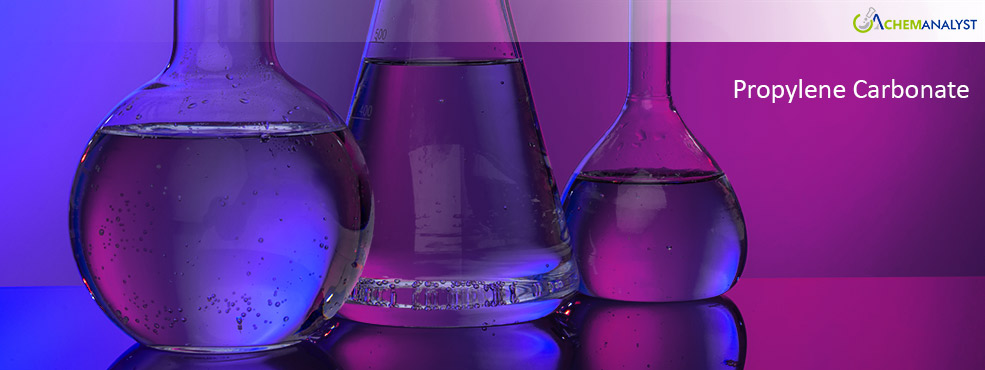U.S. Propylene Carbonate Prices Stabilize Despite Supply Challenges and Fluctuating Demand Dynamics
- 17-Jan-2025 3:30 PM
- Journalist: Philip Freneau
Propylene Carbonate prices in the United States remained stable during the first half of January 2025. The stability in prices comes despite global supply challenges and a mixed domestic demand landscape. Tightened international supply, including plant shutdowns in key regions like China, posed challenges, but these were alleviated by increased import volumes and steady domestic production. At the same time, the market faced tepid demand, particularly from the battery manufacturing sector.
The U.S. propylene carbonate market benefitted from steady feedstock propylene costs and stable production at domestic facilities. Despite the challenges posed by global disruptions in key regions such as China and Europe, increased import volumes of propylene carbonate helped ease any potential shortages. U.S. production of propylene carbonate remained unaffected, with manufacturing facilities operating at regular levels, which provided a predictable cost environment for the industry. The stability in prices was primarily driven by this consistent production and import dynamics. However, future supply constraints may arise with the planned shutdown of Olin Corporation’s chloralkali unit in Freeport, Texas, which provides feedstock to Dow’s propylene oxide unit. However, this shutdown, scheduled for the end of 2025, may disrupt the supply of propylene carbonate if feedstock availability becomes a concern.
Despite global disruptions, downstream demand for propylene carbonate from the paints and coatings sector played a key role in supporting the U.S. market. This industry, bolstered by steady demand for decorative and industrial coatings, helped balance market conditions amidst weaker demand from other sectors. The resurgence in construction and infrastructure projects in certain regions contributed to increased usage of paints and coatings, which rely on propylene carbonate as a solvent in many formulations. Additionally, the trend of e-commerce growth in the retail sector for paint products further fueled demand. However, the construction downturn due to rising borrowing costs and slower residential and commercial development limited the broader growth of related applications like polyols and polyurethane, reducing overall consumption of propylene carbonate in those areas.
Looking forward, the outlook for the U.S. propylene carbonate market remains stable, largely driven by the electrolyte industry and energy storage demand. The growing interest in lithium-ion batteries and advancements in energy storage technologies are expected to drive demand, as it is a critical component in many of these applications. However, the market will need to contend with global supply chain disruptions and price fluctuations caused by geopolitical events and regulatory changes. Future demand from the paints and coatings sector will also play a key role in propylene carbonate consumption. A recovery in the U.S. housing and commercial construction markets could positively affect the demand for polyols and polyurethane products, ultimately boosting propylene carbonate consumption.
Moreover, energy prices and regulatory factors related to environmental standards will continue to impact production costs for propylene carbonate manufacturers. These external factors, combined with the aforementioned supply chain disruptions, will determine the market’s future direction.



